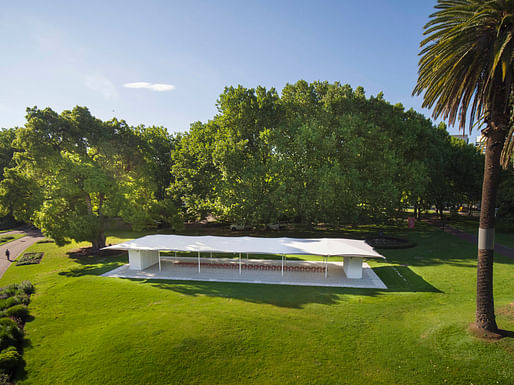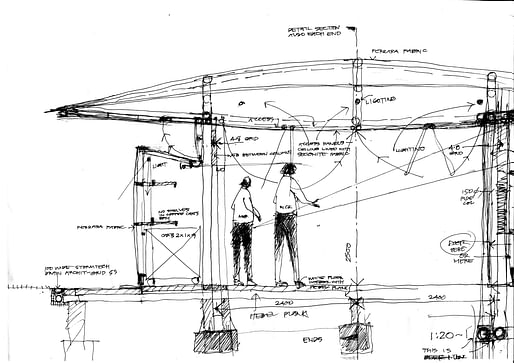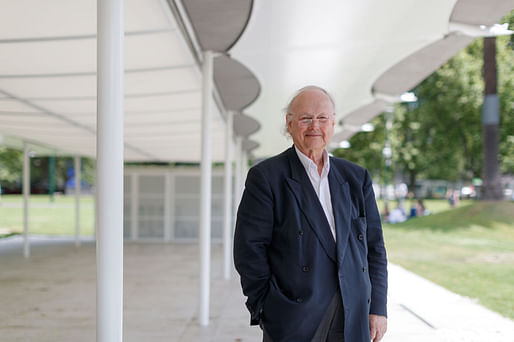
In celebration of his 50-year-long career, Australia's Pritzker Prize-winning architect consecrates the achievement with the opening of this year's MPavilion. The structure embraces Murcutt's fundamental approach to architecture, touching the ground lightly while thoughtfully considering the climatic characteristics of the site.


The MPavilion manifests itself as a flexible space, a "true pavilion," in the words of the architect, capturing the historical essence of pavilions as light and temporary buildings, at their core, tent structures. During the design process, Murcutt recalled a trip he had taken to Mexico, to the Yaxchilán ruins. A light aircraft carried the architect and his companions to their destination. During a lunch break, the group had a picnic in the shade provided by the wing of the aircraft:
"After lunch, I put my rucksack against the aircraft’s undercarriage and laid down, and there above me was the beautiful wing, lined with aircraft fabric—which led me to the MPavilion’s roof." - Glenn Murcutt

Realized in his new work, the roof of the MPavilion sits 3.9 meters high with wing-like curved trusses atop a simplified column grid. Translucent tensile membrane fabric line the trusses and are accompanied by internal ceiling panels made from luminous Ceconite aircraft fabric. A radiant white roof, floating buoyantly over the new space, emits an evening glow through concealed LED lights, fulfilling Murcutt's desire for a lantern like representation during darker hours.

Considering the robust public programs that will occur within the pavilion, the two long sides of the space face north and south respectively. The roof extends beyond the boundaries of the square grid foundation below, achieving shade in the summertime. The northern face frames views toward a river and the city of Melbourne beyond, and the south facade houses operable fabric blinds that allow for a greater degree of weather regulation. Alcoves on the east and west ends anchor the space and hold timber-slat pivot doors on the interior with a membrane lined exterior surface.

For this year's MPavilion program, the Naomi Milgrom Foundation has commissioned a number of Australian artists and designers. Chris Connell in collaboration with grazia&co designed a stackable stool to accompany Murcutt's design. The end result is a powder-coated metal tube framed stool wrapped in a metal mesh to create the seat. Its jubilant color scheme creatively contrasts the purity of the pavilion's milky appearance.
The MPavilion will open to the public on November 14th.

2 Comments
Amazing!
Curious about the cone in the sketch coming from the individuals waist area, serious question, what is that showing? Love the sketches regardless
Block this user
Are you sure you want to block this user and hide all related comments throughout the site?
Archinect
This is your first comment on Archinect. Your comment will be visible once approved.